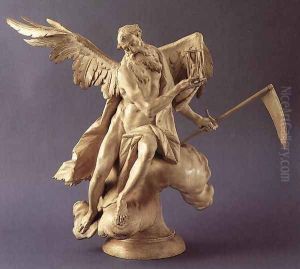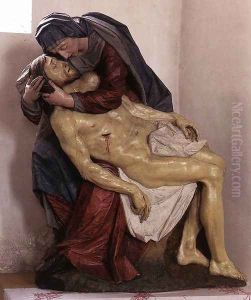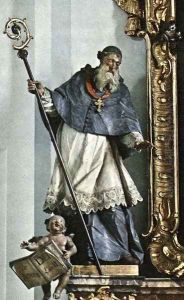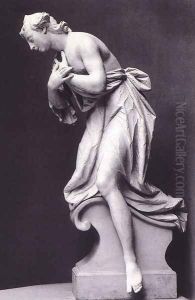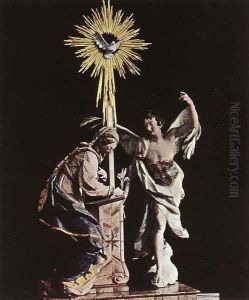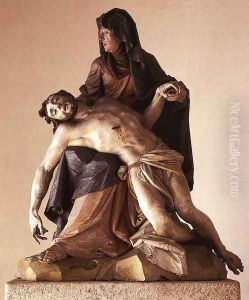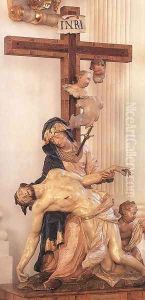Franz Ignaz Gunther Paintings
Franz Ignaz Günther was a pivotal figure in the Rococo period of art, born on February 22, 1725, in Altmannstein, Bavaria. He emerged as one of the most prominent German sculptors of the 18th century, known for his delicate and expressive religious figures that imbued a sense of spiritual elegance and grace. Günther's career spanned a period marked by a transition from the Baroque to the Rococo styles, where art became increasingly ornate, light, and focused on themes of natural beauty, love, and playfulness.
Günther's training began under the tutelage of his father, who was also an artist, before he went to further his education in Vienna and possibly Italy, where he was exposed to the works of the leading artists of the time. This exposure significantly influenced his artistic development, blending the dynamism of the Baroque with the lighter, more graceful elements of the emerging Rococo style. By the time he returned to Southern Germany, Günther had developed a distinctive style characterized by the emotional depth and refined elegance of his sculptures.
Throughout his career, Günther worked extensively for the church and various Bavarian courts, creating altarpieces, religious statuary, and portraits that reflected his deep understanding of human emotion and spirituality. His works are noted for their intricate details, dynamic compositions, and the ability to convey complex theological concepts through visual art. One of his most famous works is the series of sculptures he created for the Rokoko church of the Wies, which are celebrated for their dramatic expressions and intricate craftsmanship.
Franz Ignaz Günther's contribution to the field of sculpture and the Rococo style is significant, with his works influencing the direction of German art and continuing to be studied for their aesthetic beauty and technical mastery. He passed away on June 27, 1775, in Munich, leaving behind a legacy that has cemented his place as one of the foremost sculptors of his time. His art remains a testament to the richness of the Rococo movement and his exceptional ability to capture the complexities of the human spirit.
